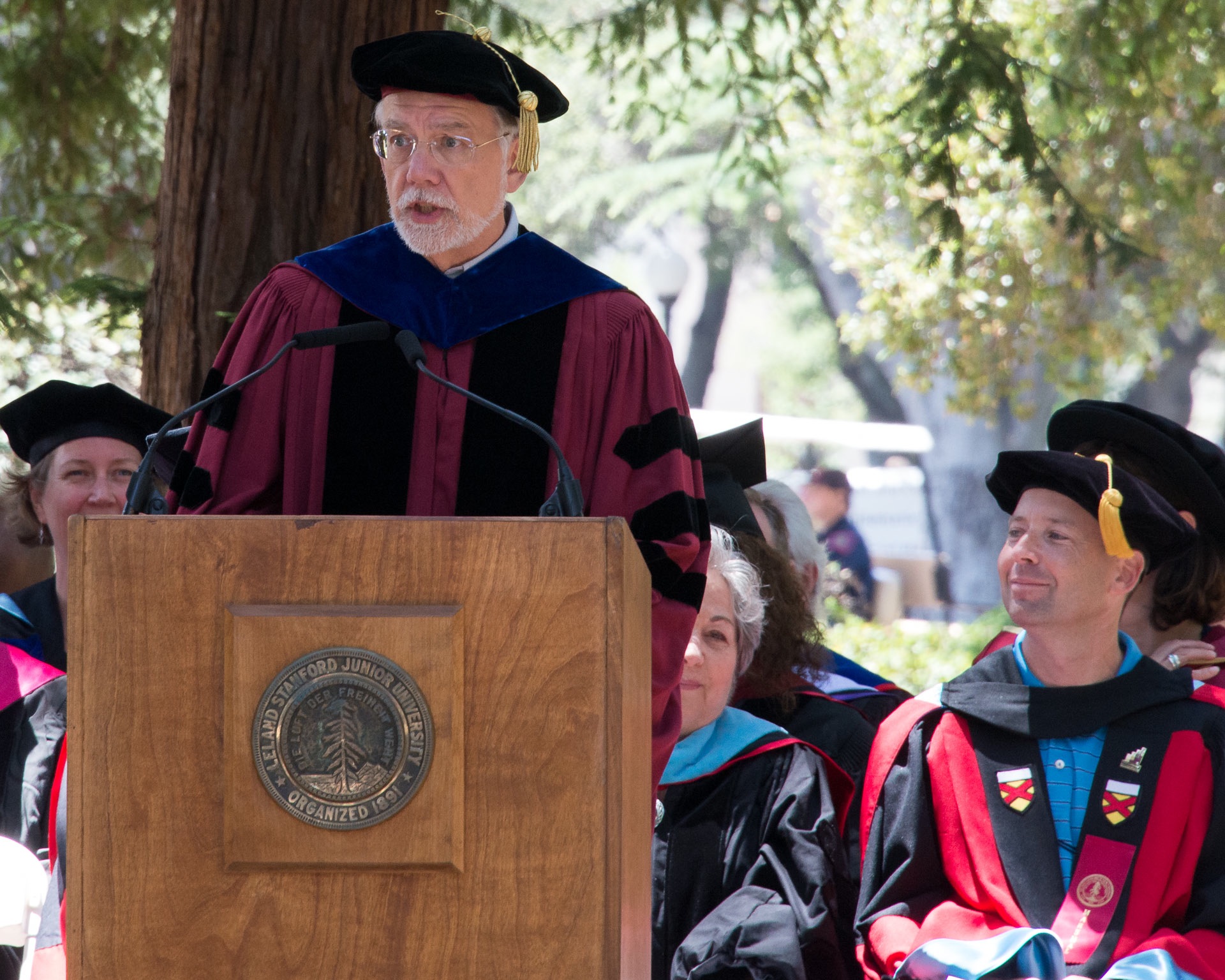
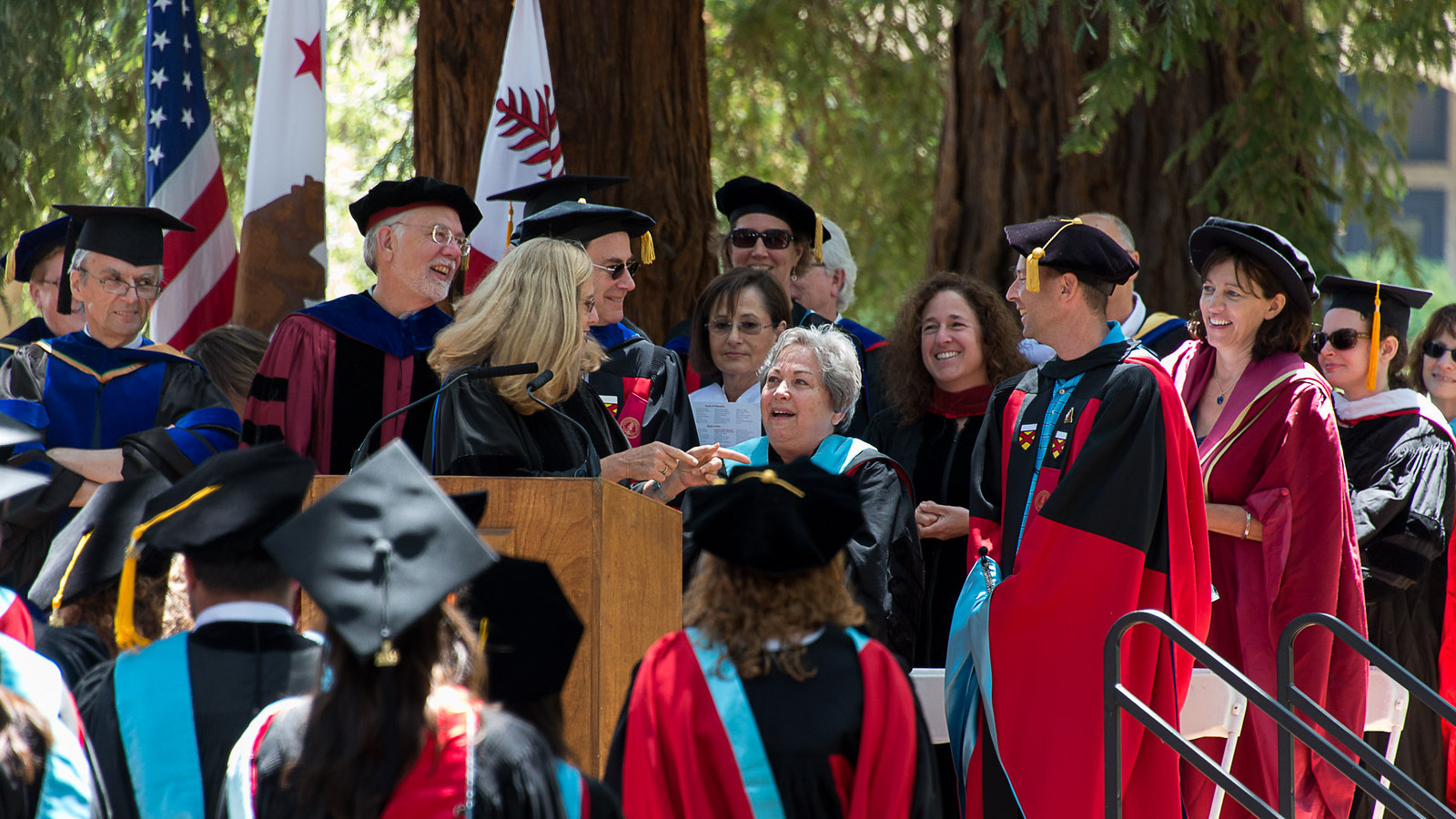

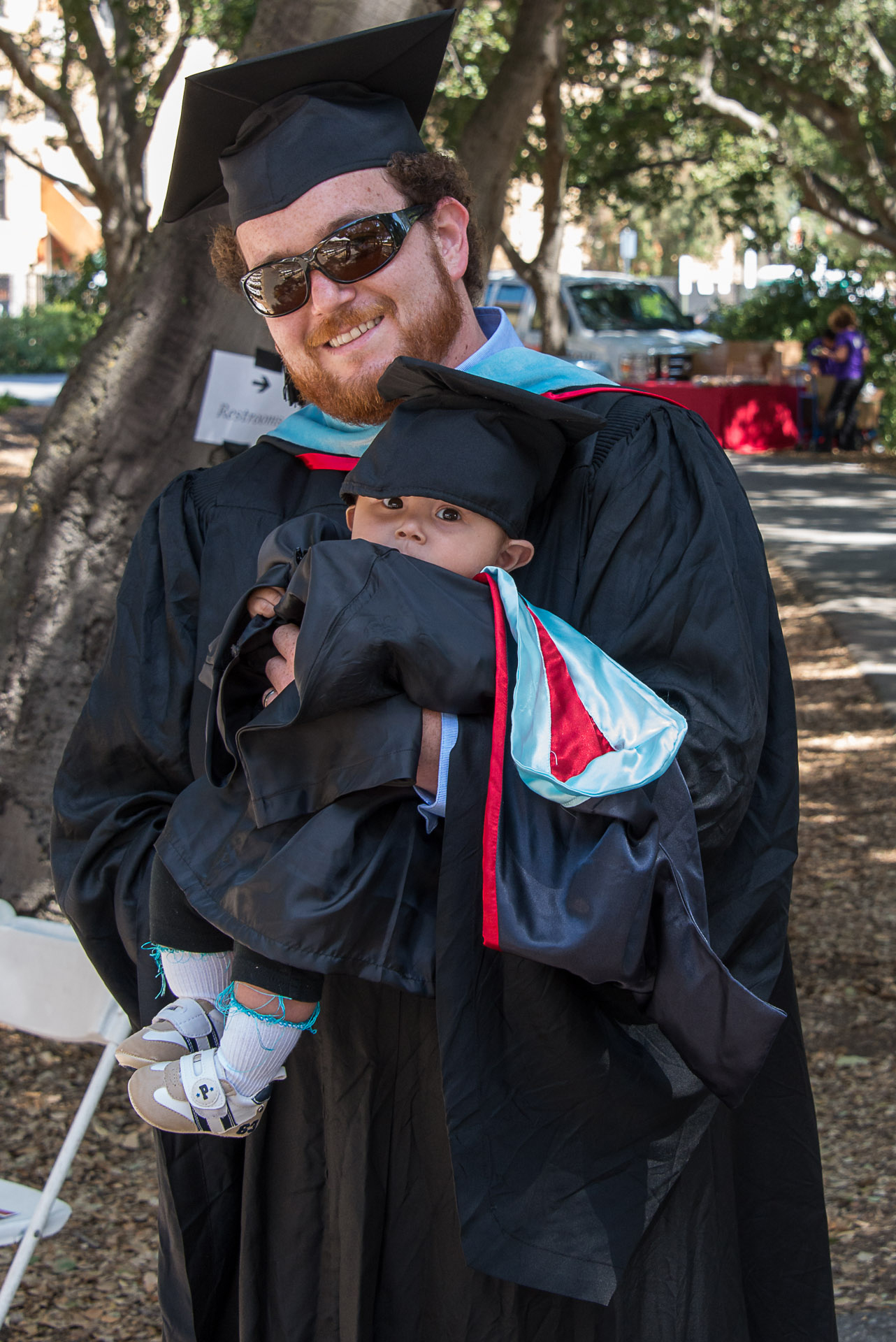


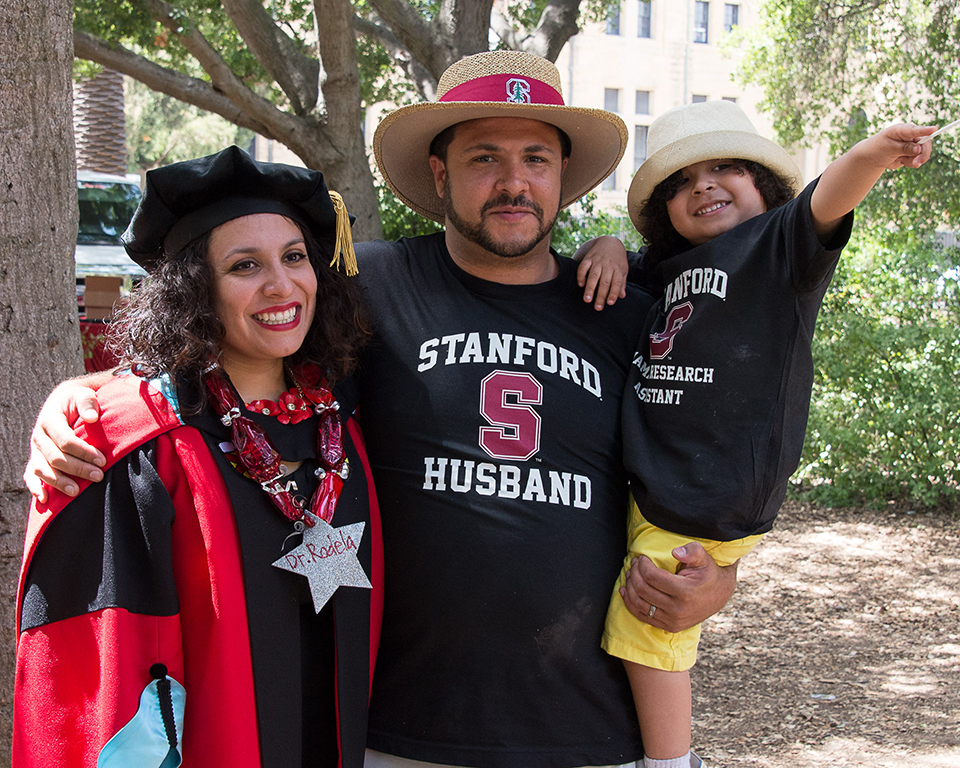


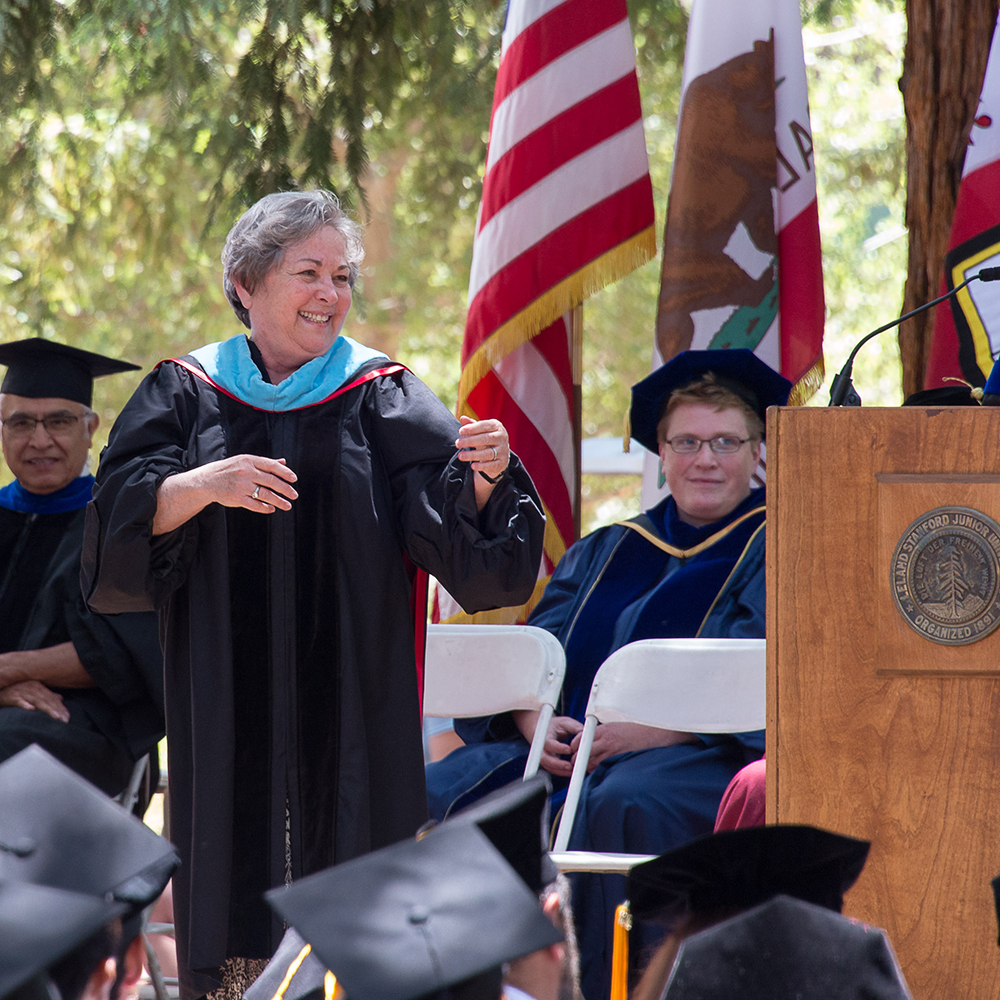

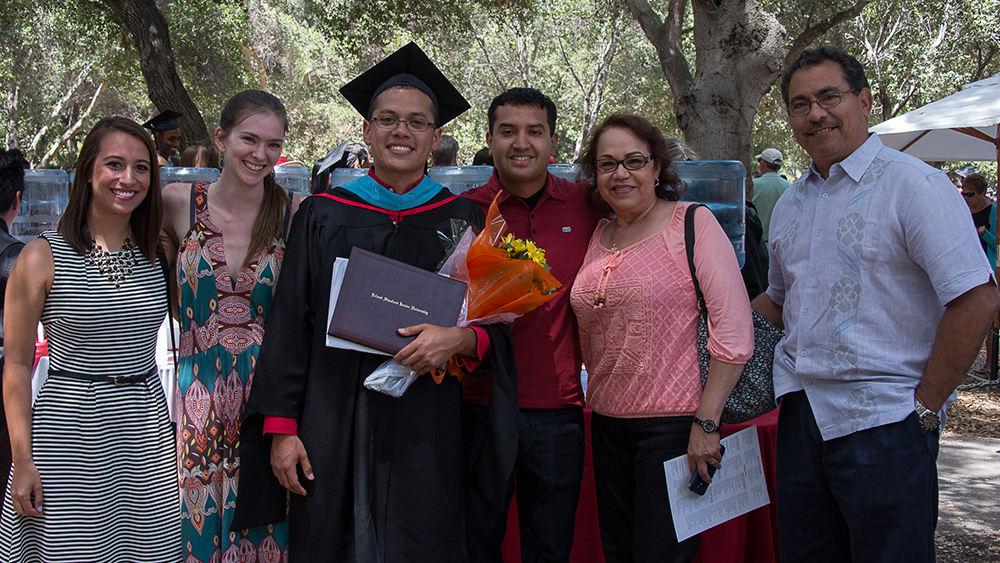


Teacher. Researcher. Leader.
These are three distinct careers that some 200 scholars who received degrees from the Stanford Graduate School of Education on Sunday plan to pursue. Yet these are also paths that will constantly cross — and should not diverge from what brought these graduates together in the first place: their experience as students.
“The best teachers never stop being students themselves,” Edward Haertel, professor of education, emeritus, said in the 2014 GSE commencement address. “The researcher who hopes to influence policy must also be a teacher, framing and communicating findings so that journalists or elected officials can grasp their import.”
And he noted, “The effective leader is at once a teacher, and a student, and a researcher.”
Haertel had summed it up a few moments earlier. These roles — teacher, researcher, leader and student — “are interdependent and mutually supportive,” he said.
The GSE commencement, which took place in the shade of the redwoods and oaks in the West Oval Grove, was part of Stanford University’s 123rd commencement ceremony. The graduate school’s origins can be traced back to the university’s opening in the fall of 1891, when education was one of its original departments, with a total of five students. The GSE has 210 graduates this academic year, which continues to the end of this summer.
“We’re proud of you,” Dean Deborah Stipek said in her welcome to the graduates and their family and friends. The Stanford degrees they had earned marked a milestone that would certainly impress others in the years to come, she said. But that accomplishment, she noted, also carried a responsibility to do more.
“We expect you to use the advantages you have had at Stanford to make the world a better place — a place where every child has access to a qualified, effective teacher in a safe, supportive school environment; where communities meet all children’s needs for supervision, affection and opportunities to develop their character and their skills; where the language they speak, the color of their skin and the income of their parents have no bearing on their opportunities,” she said.
Stipek then introduced Haertel, whom she described as a pillar of the GSE’s scholarship and integrity, as well as a fount of institutional memory. (“Whenever the rest of us failed to recall a policy decision, Ed was quick to fill us in,” she said.)
The Jacks Family Professor of Education, Emeritus, Haertel joined the Stanford faculty in 1980 and served as the GSE’s associate dean for faculty affairs from 2005 to 2011. He is an elected member of the National Academy of Education and former president of the National Council on Measurement in Education, which gave him its award for career contributions to education measurement.
The author of numerous journal articles, policy reports and scholarly books, he is one of the nation’s foremost experts in appropriate uses and valid interpretations of test scores, and he is renowned for being able to explain complex statistical concepts, such as value-added models, to a lay audience. He has played a major part in shaping California's school accountability system.
“I hope that those of you playing the role of teacher will show your own students that you are still a student, as well,” Haertel said in his commencement address. As an example, he described an instance of a graduate student coming into his office and mentioning a paper by someone in his field whom he had not heard of. “The easy response is for me to nod sagely and make a mental note to look up the person and the paper when I get a chance,” he said. “But I may be a better teacher if, before our conversation ends, I consciously expose my own ignorance and ask my student about the paper and about the author.
“This lets my student be my teacher. It lets me be an active learner. And it lets me convey, in this natural teaching moment, that a teacher secure in that role doesn’t always have to give an appearance of knowing all the answers.”
Haertel called on students, particularly those pursuing careers in research, to “respect the logic of inquiry within whatever methodological traditions you pursue.” While recognizing that research may be driven by passion, he noted that “as scholars — whether inside or outside of the academy — we have a special status, a special public trust, which demands that we follow our inquiries wherever they lead, and report our findings whatever they turn out to be, whether or not they align with our beliefs and expectations.
“The special credibility accorded to disciplined research, the legitimacy of rigorous intellectual inquiry, is a legacy we must all work together to preserve, always distinguishing the findings of disciplined scholarship from advocacy,” he said.
Haertel encouraged students to fight for ideas and causes they believe in, but to “resist the temptation” to bolster positions with assertions that are not supported by research findings. At the same time, he warned, research has its limits. “Research can usefully inform our decisions, but only rarely can it determine a best course of action when a particular, local, contextualized choice must be made,” he said.
It was a crisp sunny afternoon, with a cool breeze, as the faculty joined with students and their families and friends to celebrate this milestone. One by one the students had their advisors place their graduate hoods over their heads and received their diplomas. (Included with those crossing the stages was one baby, dressed in a tiny black gown and a specially designed mortarboard, who was carried in the arms of his graduating dad— a fitting way to mark the other big event on Sunday, June 15: Father’s Day.)
There was a total of 21 PhDs and 191 masters degrees awarded this year by the GSE. Almost half of the Class of 2014 — 99 graduates (23 in elementary and 76 in secondary) — received MAs from the Stanford Teacher Education Program at the GSE. Most of them will be teaching this fall in public school classrooms, working in under-served communities.
Among the other MAs being issued are 35 in Policy, Organization and Leadership Studies; 19 in Learning, Design and Technology; 14 in International Comparative Education and International Educational Administration and Policy Analysis; six in Curriculum Studies and Teacher Education; and one in an individually designed course of study. In addition, the GSE and the Stanford Graduate School of Business gave MA/MBA degrees to 13 students, and the GSE and Stanford Law School gave MA/JD degrees to two students.
There were also 10 Stanford undergraduates who had a special ceremony on Friday to mark their completing minors and/or received honors in education. (Two students did both.)
“Remember as a Stanford alumnus you are part of a very big family,” Stipek said at the start of the ceremony. She explained how pulling together can have a big impact. “Alone we can accomplish only so much,” she said. “As a community we can make a real difference.”
At the GSE commencement drew to a close, Stipek briefly interrupted the proceedings to honor professor of education Rachel Lotan, who is retiring this month after serving as director of STEP Secondary for 15 years. Lotan was called to the podium, and she received a long standing ovation from the students and the rest of the crowd.
As the applause for Lotan faded, Stipek invited everyone to a reception with refreshments and the chance to pose for photos with professors and classmates. And she urged the educators to keep in touch.
“Congratulations graduates,” she said. “Go forth, go good, and please stay connected.”
All photographs are by Chris Wesselman.
Subscribe to our monthly newsletter.